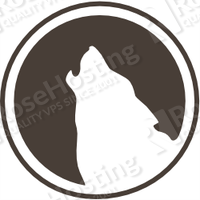
Af the very beginning we need to make sure that all packages installed on the server are up to date
yum -y update
Wolf CMS depends on a database, so we will install MariaDB server
yum install mariadb mariadb-server
Start the MariaDB database server and enable the service at boot time
systemctl start mariadb systemctl enable mariadb
Run the ‘mysql_secure_installation’ post installation script which removes the test database and secures MariaDB. It will also prompt you to set your MariaDB root password.
Log in to the MariaDB server using the ‘root’ user and create new user and database with Unicode collation type
mysql -u root -p CREATE DATABASE wolfcms CHARACTER SET utf8 COLLATE utf8_unicode_ci; CREATE USER 'wolfcmsuser'@'localhost' IDENTIFIED BY 'PASSWORD'; GRANT ALL PRIVILEGES ON `wolfcms`.* TO 'wolfcmsuser'@'localhost'; FLUSH PRIVILEGES;
Next, we will install Apache web server, start it and add it to automatically start on the system start-up
yum install httpd systemctl start httpd systemctl enable httpd
Install PHP and with PHP modules
yum install php php-mysql php-common
Download the latest stable version of Wolf CMS from their official website.
wget https://bitbucket.org/wolfcms/wolf-cms-downloads/downloads/wolfcms-0.8.2.zip
Unpack the zip archive to the document root directory on your server
unzip wolfcms-0.8.2.zip -d /var/www/html/
The archive will be unpacked in a new ‘wolfcms’ directory. Change your current working directory and change the owner of the directory
cd /var/www/html/wolfcms chown -R apache:apache wolfcms
In order to use clean URLs we will rename activate the .htaccess file by renaming it
mv _.htaccess .htaccess
If it is not already turned off, it is recommended to turn off magic_quotes_gpc because this feature is deprecated. To do this we need to edit PHP’s configuation file and make sure that the following line is set to off
magic_quotes_gpc = Off
We can find the loaded PHP configating file by executing
php --ini Configuration File (php.ini) Path: /etc Loaded Configuration File: /etc/php.ini
In order to access Wolf CMS using your domain name, you need to create Apache virtual host. Create ‘/etc/httpd/conf.d/vhosts.conf’ directory with the following content
vim /etc/httpd/conf.d/vhosts.conf IncludeOptional vhosts.d/*.conf Create the virtual host vim /etc/httpd/vhosts.d/yourdomain.tld.conf <VirtualHost YOUR_SERVER_IP:80> ServerAdmin webmaster@yourdomain.tld DocumentRoot "/var/www/html/wolfcms" ServerName yourdomain.tld ServerAlias www.yourdomain.tld ErrorLog "/var/log/httpd/yourdomain.tld-error_log" CustomLog "/var/log/httpd/yourdomain.tld-access_log" combined <Directory "/var/www/html/wolfcms/"> DirectoryIndex index.html index.php Options FollowSymLinks AllowOverride All Require all granted </Directory> </VirtualHost>
and restart Apache for the changes to take effect.
systemctl restart httpd
Finally, open you favorite web browser, navigate to http://yourdomain.tld/ and follow the steps of the setup wizard to complete the installation.
After the setup is completed, delete the /install and /docs directories and remove the write permissions for the config.php file.
Of course you don’t have to do any of this if you use one of our Linux VPS Hosting services, in which case you can simply ask our expert Linux admins to install Wolf CMS for you. They are available 24×7 and will take care of your request immediately.
PS. If you liked this post please share it with your friends on the social networks using the buttons on the left or simply leave a reply below. Thanks.